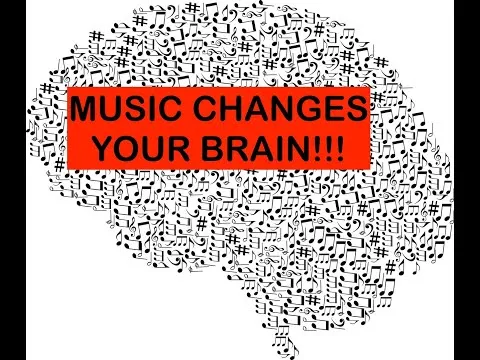This video explains what music does to your brain and how music changes your brain throughout your lifetime.
REFERENCES
Bhattacharya, Petsche, & Pereda (2001). Long-range synchrony in the γ band: role in music perception https://www.jneurosci.org/content/21/16/6329
Bird, Jackson, & Wilson(2019). Music training is neuroprotective for verbal cognition in focal epilepsy https://pubmed.ncbi.nlm.nih.gov/31074775/
Blood & Zatorre (2001) Intensely pleasurable responses to music correlate with activity in brain regions implicated in reward and emotion https://www.pnas.org/content/98/20/11818
Blood, Zatorre, Bermudez, & Evans (1999). Emotional responses to pleasant and unpleasant music correlate with activity in paralimbic brain regions https://pubmed.ncbi.nlm.nih.gov/10204547/
Brown, Martinez, & Parsons (2004). Passive music listening spontaneously engages limbic and paralimbic systems https://pubmed.ncbi.nlm.nih.gov/15486477/
Chorna et al. (2019). Neuroprocessing Mechanisms of Music during Fetal and Neonatal Development: A Role in Neurplasticity and Neurodevelopment
de Dreu, Nijstad, Baas, Wolsink, & Rsokes (2012). Working memory benefits creative insight, musical improvisation, and original ideation through maintained task-focused attention https://pubmed.ncbi.nlm.nih.gov/22301457/
Gaser & Schlaug (2003). Brain structures differ between musicians and non-musicians https://pubmed.ncbi.nlm.nih.gov/14534258/
Han et al. (2009). Gray matter density and white matter integrity in pianists’ brain: A combined structural and diffusion tensor MRI study https://pubmed.ncbi.nlm.nih.gov/18672026/
Hepper & Shahidullah (1994). The development of fetal hearing,” Fetal and Maternal Medicine Review https://www.ncbi.nlm.nih.gov/pmc/articles/PMC1061088/
Hutchinson, Lee, Gaab, & Schlaug (2003). Cerebellar volume of musicians https://pubmed.ncbi.nlm.nih.gov/12902393/
Hyde et al. (2009). Musical training shapes structural brain development https://pubmed.ncbi.nlm.nih.gov/19279238/
Janata et al. (2002). The cortical topography of tonal structures underlying Western music https://pubmed.ncbi.nlm.nih.gov/12481131/
Lordier et al. (2019). Music processing in preterm and full-term newborns: a psychophysiological inter- action (PPI) approach in neonatal fMRI https://pubmed.ncbi.nlm.nih.gov/31015828/
Molina et al. (2021). Resting-State Network Plasticity Induced by Music Therapy after Traumatic Brain Injury https://www.ncbi.nlm.nih.gov/pmc/articles/PMC7964116/
Moore, Schaefer, Bastin, Roberts, & Overy (2014). Can Musical Training Influence Brain Connectivity? Evidence from Diffusion Tensor MRI. https://www.ncbi.nlm.nih.gov/pmc/articles/PMC4101485/
Norton et al. (2005). Are there pre-existing neural, cognitive, or motoric markers for musical ability? https://pubmed.ncbi.nlm.nih.gov/16054741/
Parsons et al. (2008). Simultaneous dual fMRI scanning of duetters
Partanen, Kujala, Tervaniemi, & Huotilainen (2013). Prenatal music exposure induces long-term neural effects https://www.ncbi.nlm.nih.gov/pmc/articles/PMC3813619/
Popescu, Robert, Howe, & Auerbach (2004). Reaction mechanism determines NMDA receptor response to repetitive stimulation https://pubmed.ncbi.nlm.nih.gov/15306812/
Rodrigues, Loureiro, & Caramelli (2010). Musical Training, Neuroplasticity, and Cognition https://www.ncbi.nlm.nih.gov/pmc/articles/PMC5619060/
Särkämö & Soto (2012) Music listening after stroke: benefi- cial effects and potential neural mechanisms
Schlaug (2009) Music, musicians, and brain plasticity https://www.oxfordhandbooks.com/view/10.1093/oxfordhb/9780199298457.001.0001/oxfordhb-9780199298457-e-018
Siponkoski et al. (2020). Music therapy enhances executive functions and prefrontal structural neuroplasticity after traumatic brain injury: Evidence from a randomized controlled trial https://pubmed.ncbi.nlm.nih.gov/31642408/
Trehub (2001). Musical predispositions in infancy https://pubmed.ncbi.nlm.nih.gov/11458822/
Ueda, Suzukamo, Sato, & Isumi (2013). Music listening after stroke: benefi- cial effects and potential neural mechanisms https://pubmed.ncbi.nlm.nih.gov/22524369/
Vik (2019). Music-supported systematic treatment strategies for people with executive dysfunction following traumatic brain injury: Similarities and divergencies in 7 case reports https://www.semanticscholar.org/paper/Music-supported-Systematic-Treatment-Strategies-for-Vik/1184349ed2396ae0dffa719e8e2cd4b2abdbefbd
Vik, Skeie, & Specht (2019). Neuroplastic effects in patients with traumatic brain injury after music-supported therapy https://www.ncbi.nlm.nih.gov/pmc/articles/PMC6604902/
Vik, Skeie, Vikane, & Specht (2017). Effects of music production on cortical plasticity within cognitive rehabilitation of patients with mild traumatic brain injury https://pubmed.ncbi.nlm.nih.gov/29388854/
Zatorre, Chen, & Penhune (2007). When the brain plays music: auditory-motor interactions in music perception and production https://pubmed.ncbi.nlm.nih.gov/17585307/
▶️ 3Speak
